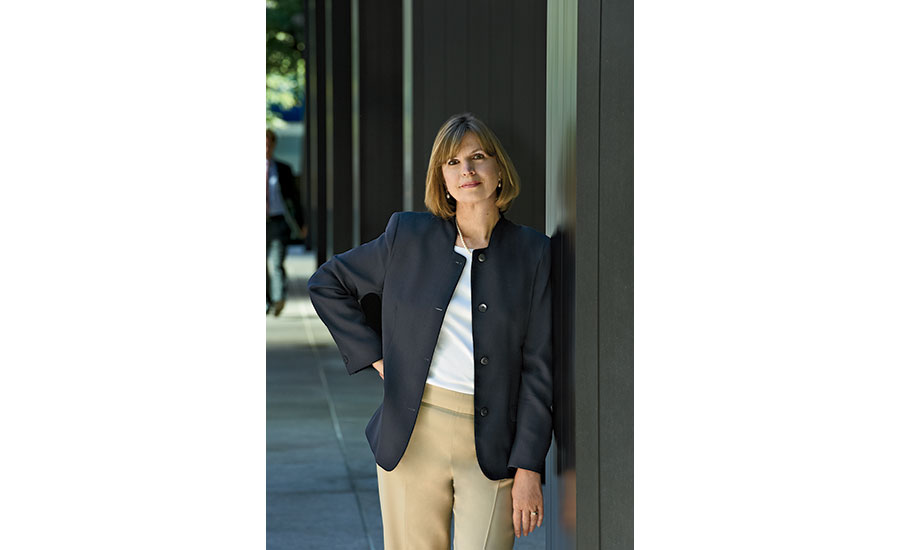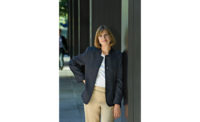High Times
Skyscrapers continue to capture the imagination of architects, who are finding more freedom to innovate and enliven the skylines of our cities.

Photo © Michel Arnaud
Last year, more skyscrapers were completed around the world than ever: a total of 128 new buildings reached at least 200 meters (658 feet), according to the Council on Tall Buildings and Urban Habitat; of those, 10 were supertalls (984 feet or more). Not surprisingly, China held the record by a mile, with 84 new skyscrapers, while the United States came in second, with only seven.
Rapid urbanization and the increased densification of cities is pushing high-rise construction to new heights: there was a global grand total of 1,168 skyscrapers at the end of 2016, compared to only 265 in the year 2000—an amazing rate of growth that shows no signs of slowing down.
But when it comes to high-rises, height isn’t everything. While the design of the Burj Khalifa (the world’s tallest for now, but soon to be outstripped) is a play on a classic spire, architects are toying even more with form, sometimes abandoning the tower altogether. When Rem Koolhaas vowed to reinvent the skyscraper, he and his firm, OMA, helped start a trend, with their angled donut of a structure for CCTV in Beijing, completed in 2012. Around the same time, MZ Architects designed the Aldar headquarters in Abu Dhabi, a perfect circle in elevation, 361 feet tall, which opened in 2010. Other unconventional though not yet built ideas for high-rises include MAD’s proposed Fake Hills Point Tower, part of the Fake Hills complex, in Beihei, China, a squiggle-like form 194 meters (636 feet) high; BIG’s design for the Cross # Towers in Seoul, shaped like a hashtag; and Herzog & de Meuron’s approved scheme for the 42-story Tour Triangle in Paris—it would be the third-highest structure in the city, with a shape that looks like a giant wedge of Camembert.
In this issue of RECORD, we explore formal invention in the design of tall buildings. “From a historical perspective, architects who built skyscrapers used to be a kind of corporate specialist who understood the bottom line. There just wasn’t much license to innovate,” says Carol Willis, founder and director of the Skyscraper Museum in New York. “But now that the commercial market has embraced architects as celebrities of sorts, there is more freedom to innovate.”
For many corporate clients, the desire to stand out in increasingly dense cities is a strong motivator. In a new business district in Beijing, a developer wanted a singular centerpiece as a branding tool for an office complex, Poly International Plaza. SOM created a 529-foot high-rise with a dramatic exterior—a crisscrossing steel-and-concrete diagrid—called the Diamond Lantern.
In Istanbul, the client for the Maslak No. 1 Tower was looking for “an extravaganza” on a tight site surrounded by indifferent commercial buildings. Emre Arolat Architecture more than obliged with its design for a structure with a spatter-shaped plan and a sexy, undulating glass enclosure. Both the Istanbul and Beijing towers have double facades, with the space between the interior and exterior skins mitigating seasonal climate changes and urban noise.
Kohn Pedersen Fox (KPF), veterans of the tall building type, have completed the first of 14 skyscrapers planned for Hudson Yards, the 28-acre development rising on the west side of Manhattan. The 900-foot tower will have a 1,300-foot-high companion, also by KPF, finishing in 2019. With their sloping facades and angled crowns leaning toward each other, the two towers will make a dynamic duo on the skyline.
An especially distinctive addition to the Manhattan cityscape is Herzog & de Meuron’s first completed skyscraper, a 57-story residential tower. A layered confection of stacked, cantilevered boxes and jutting balconies, its design reflects the diverse layouts of the interior’s 145 apartment units, resulting in the lively exterior visible from many parts of the city.
A new corporate headquarters in Indianapolis is less a showstopper on the skyline than an elegant addition to the urban context. In fact, Cummins Tower, by Deborah Berke Partners, is really a short high-rise, if that is not a contradiction in terms. At only nine stories, the first office building by the firm features narrow, cantilevered levels, whose arrangement was determined by sun and energy studies, to create workspaces on each floor with optimum daylight.
The skyscraper remains an aspiration for many architects—and opportunities for reinventing the form only make the challenges of designing the complex building type even more alluring.


